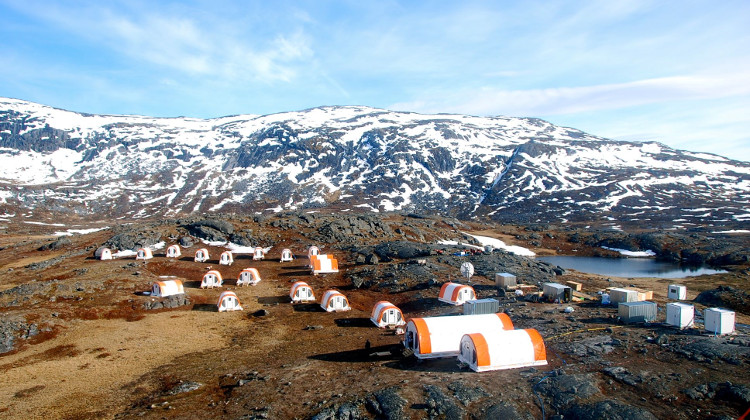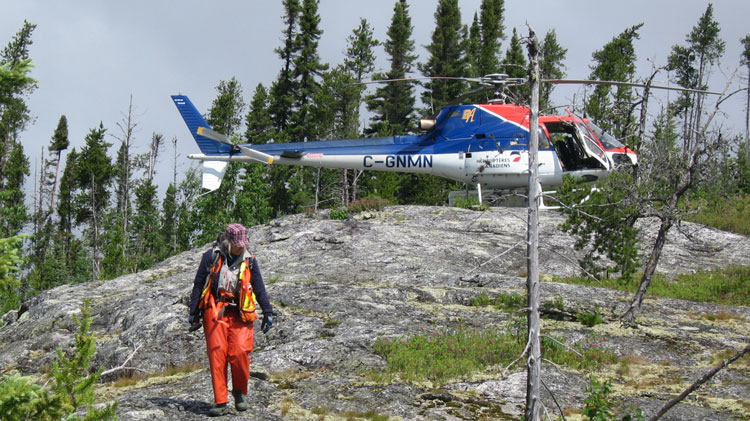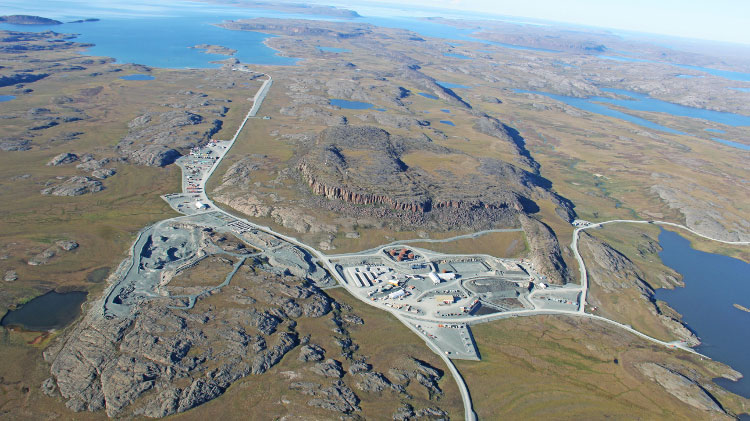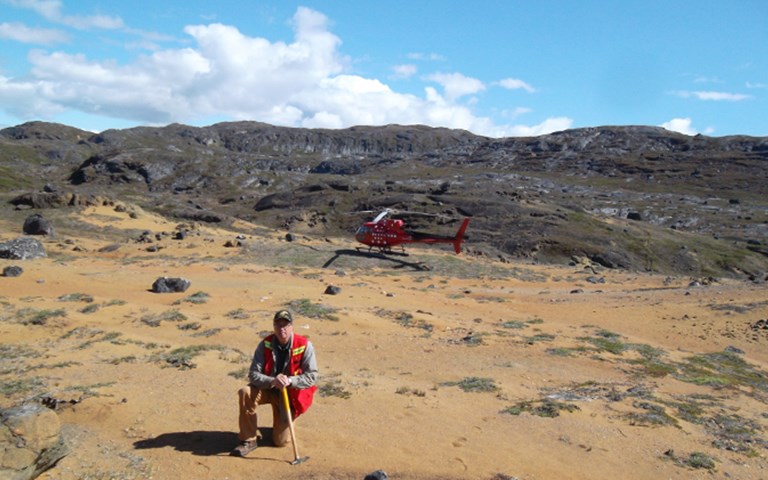Mark Fedikow says the geographic and legal terrain have made Greenland a good area to explore. Courtesy of North American Nickel

North American Nickel (NAN), an exploration and development company, was formed in 2010 by spinning out nickel properties in Ontario and Manitoba held by junior miner VMS Ventures. Not long after NAN listed on the TSX Venture Exchange, a pair of prospectors familiar with Greenland pitched the company on a nickel-copper play on the southwest coast of the island. Today, the company is wrapping up its fourth year of drilling at its Maniitsoq nickel-copper-cobalt-platinum group metal project in southwestern Greenland. This year’s work featured the discovery of a new mineralized zone the company reports as one of the best drill results from the property to date. It is also close to completing the acquisition of a deep water port on the southern end of its nearly 3,000-square-kilometre property. We talked to North American Nickel’s president, Mark Fedikow, to learn more about what lured the company to the relative greenfields of Greenland and what they have discovered during their time in the North Atlantic.
CIM: How long after North American Nickel formed did you shift your attention to Greenland?
Fedikow: We listed in April 2010 and three months later we were approached by two prospector-geologists with years of exploration experience in Greenland. They presented us with a property scenario that eventually evolved into the Maniitsoq project. They described numerous historic nickel, high-grade nickel, copper, cobalt, PGM occurrences on the southwest shore of Greenland that had received little modern exploration despite the tenor of the nickel and related metals. The property is situated in an area that is pack ice-free year-round and very close to tide water. With this in mind our chief geologist, John Pattison, travelled to Greenland to review the property and to assess the regulatory environment and logistical support available. John confirmed the favourable geology and mineralization, as well as the care with which past historic exploration results were organized. Historic drill core and assessment reports were readily available.
CIM: How did you put that information to use?
Fedikow: We acquired a 5,000-square-km property which, at that time, was the largest licence that had ever been granted in Greenland. We then brought modern geophysical technology to bear on the property in the form of helicopter-borne, electromagnetic and magnetic surveys. Because the surveys are helicopter-borne, we were able to hug the rugged terrain with our geophysical sensors and maintain a fixed height of surveying above ground. This gave us a tremendous advantage over previous explorers who utilized fixed-wing surveys.
Rubies will be the initial jewel in the crown for Greenland's emerging mining industry
CIM: To what extent had the property been explored before NAN arrived?
Fedikow: The earliest work was done by Danish company Kryolitselskabet Øresund A/S or KO. The approach utilized by KO was to fly over the terrain in a fixed-wing aircraft and mark on their base maps every rusty or gossanous site they saw on the ground. Later, they would follow up these areas on foot with their crews. This follow-up included sampling and mapping, and in some instances they would drill the target. Drilling was limited to depths of around 50 metres and was hampered by a lack of modern geophysical techniques to assess the orientation and depth of their mineralized targets, thus effectively drilling blindly. With the airborne system we currently utilize it allows us to look roughly 200-plus metres below surface, which identifies mineralized zones that weren’t exposed at surface.
CIM: And the lack of ground cover must help as well?
Fedikow: Yes, the surveying is very effective because the landscape is about 85 to 90 per cent rock. It is unlike Canada where bedrock is mantled by thick sequences of glacial sediments, and derivatives such as sand, silt or clay topped by wet organic soil and swamp. There are no forests and as such, it provides a tremendous advantage for prospecting, mapping and general exploration. This is one reason why KO was successful.
CIM: As well suited as the landscape is to exploration, how have you found the legal terrain?
Fedikow: All of the regulatory issues relating to exploration and mining are handled in Nuuk, the capital city of Greenland. There are some items we would like to see happen a bit faster than others, however, the Greenland regulatory process is transparent and we have been well served by the various government agencies that we deal with. There are no outstanding issues.
CIM: You’ve been active in the area for a number of years. How have you reached out to the larger community?
Fedikow: In 2013 we brought Tony Naldrett, a world-recognized expert in nickel sulphide ore bodies, to Greenland along with John Pattison our chief geologist. Tony and John travelled to the Greenland School of Minerals and Petroleum in Sisimiut to give presentations to the students there as part of a lecture series. The intent was to provide an introduction to North American Nickel and to give the students some background and advanced information on nickel sulphide ore bodies. More recently, we felt that as our exploration program moved forward we needed to have a wider presence in Greenland and to reach out to local communities. That was the focus of our trip to Greenland this past June.
 North American Nickel's Maniitsoq camp in southwestern Greenland Courtesy of North American Nickel
North American Nickel's Maniitsoq camp in southwestern Greenland Courtesy of North American Nickel
CIM: What was your approach?
Fedikow: This trip was focused on community engagement. We wanted to introduce NAN to the communities by telling them who we were and where we were from, what we were trying to accomplish and how we do our day-to-day job of exploration. The trip was also designed to provide a platform for local community members to voice their opinions on our activities and to air any concerns they may have regarding the impact of our activities on their community. We started in Nuuk with our meetings and travelled up the southwest coast visiting Napasoq, Maniitsoq, and Sisimiut. These three communities are adjacent to our Maniitsoq project.
CIM: What sort of concerns did they raise?
Fedikow: The local community members are very focused on water quality, because a lot of the people are fishers who rely on the fishing industry to earn their livelihood. Another group were the hunters who wanted to be certain our helicopters and other activities did not significantly impact the caribou herds. They did not want caribou herds scattered to the four winds. Subsequently, we ensured our airborne surveys were flown in such a way as to avoid the caribou.
CIM: And what did you take away from these sessions?
Fedikow: It was surprising to hear that the local communities had no major concerns with the manner in which we were undertaking our exploration. They said they wished only to be kept informed on when and where we would be working in the future, so that they could let their fellow community members know what to expect in terms of helicopter or drill activity. They also requested ways in which they could become suppliers to our exploration camp, and we are in the midst of exploring these possibilities now.
CIM: Earlier this year NAN began the work to acquire port facilities just south of your project. How does that fit into your plans there?
Fedikow: The Seqi deep water port is at the head of a fjord that provides access to ocean shipping lanes and is adjacent to the Seqi Olivine mine. The pier can handle 50,000-tonne dry weight ships, and we are just finishing up our environmental and technical due diligence on the harbour. This includes underwater assessment of the pier to verify its structural integrity. The harbour provides us with the ability to potentially ship our nickel-copper concentrates and any other commodity that we might become involved with while doing business in Greenland. The harbour is an opportunity for the company to grow and expand. We also intend to use the area adjacent to the harbour as a logistical hub that will allow us an easy and more economical way to mobilize crews, camps and supplies for the exploration of the Maniitsoq property.






